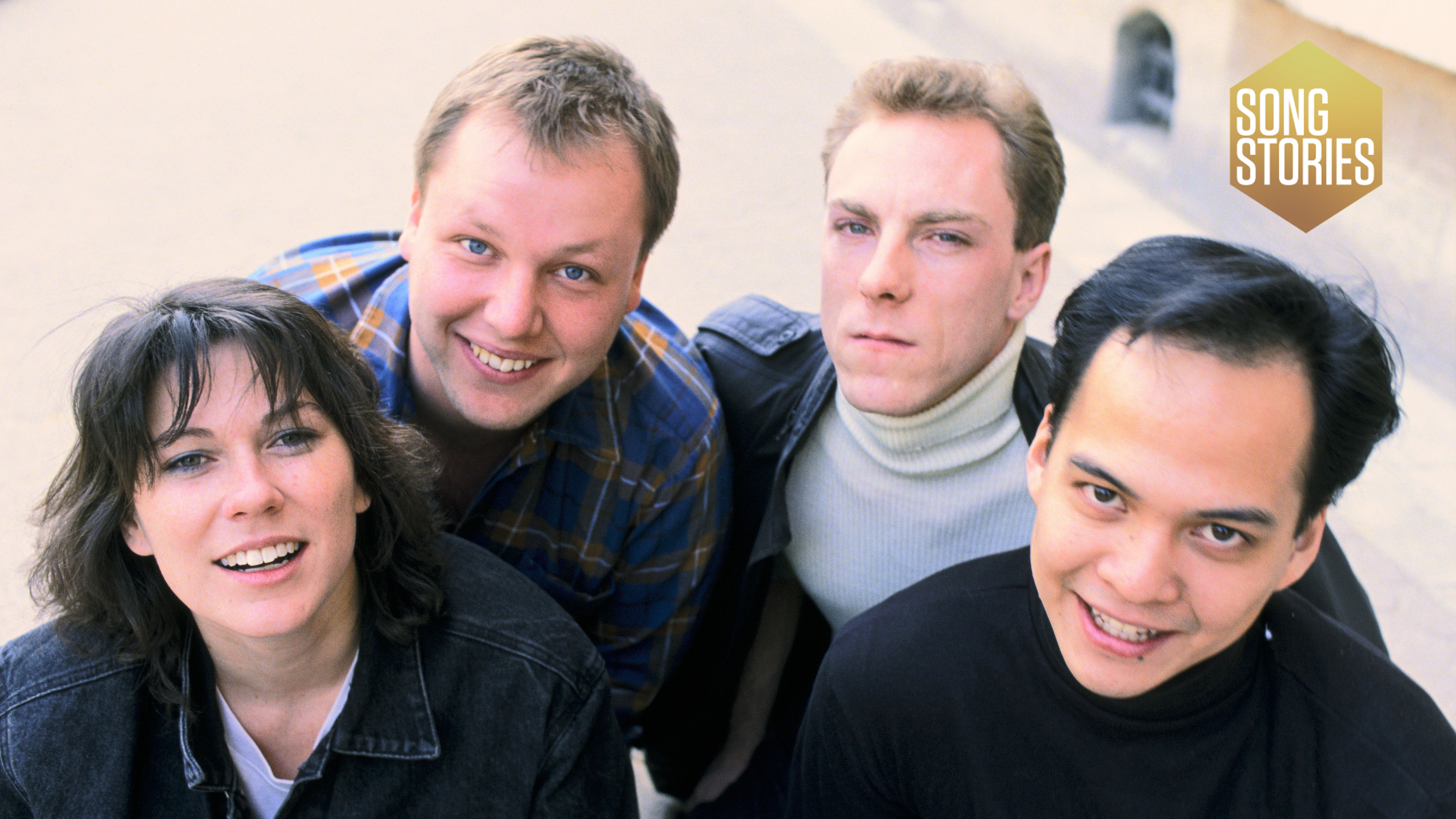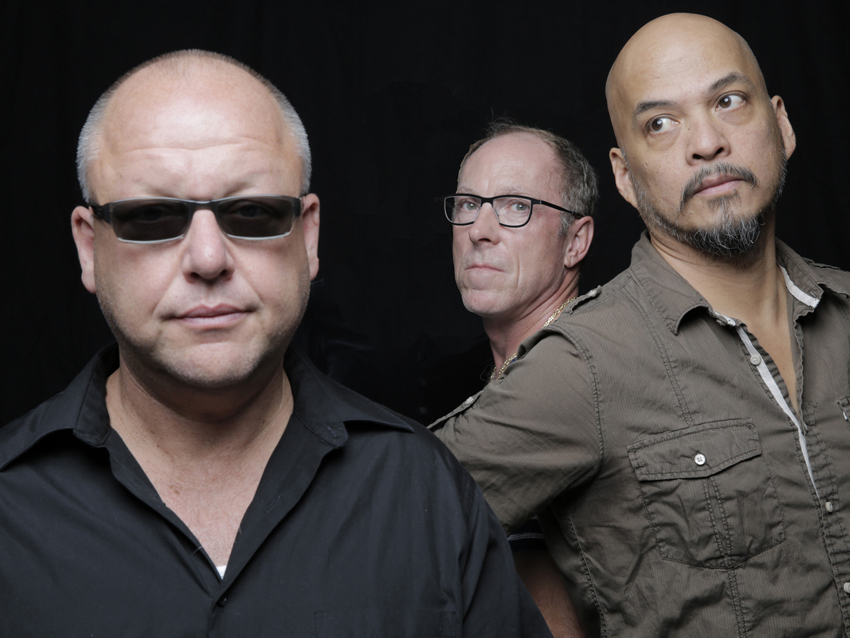The story of Pixies' Where Is My Mind?
An alternative rock anthem, inspired by snorkelling, that’s influenced everyone from Cobain to Kings Of Leon

Pixies never had a Top 10 single or a No 1 album, but this cult Boston four-piece came to define the sound of alternative rock in the late '80s and beyond. They caught the ear of some of rock’s most established figures and galvanised the next generation’s leading bands.
After splitting acrimoniously in 1993, they re-united 11 years later to the kind of box office success they could only have dreamed of when they released their debut full-length LP Surfer Rosa, which included the catchy, angular Where Is My Mind?, in 1988.
The song introduced the Pixies to a whole new audience years later when it was used at the climax of David Fincher’s modern movie classic Fight Club.
Not bad for a tune inspired by snorkelling. Pixies singer/ songwriter Black Francis (Charles Thompson, aka Frank Black) was indeed once swimming in the Caribbean with his ‘feet in the air and head on the ground’. The music came later, finished with encouragement from his (now ex-) wife. He once told ign.com that, “she poked her head out of the bathroom and said, ‘That’s a good one – finish that one’.”
It was recorded in December 1987 at Q Division Studios in Boston. Francis left his trusty Japanese Fender Telecaster in its case, opting to go acoustic. The electric comes from the Pixies’ avant-garde guitarist Joey Santiago, who played his trademark '70s re-issue Les Paul Goldtop. It was stock, but he told Musician Magazine in 1990: “I did take the pickup covers off. Someone told me that if you expose the pickups to dust, they sound better. And they do."
When the band first returned for their reunion he’d been using Marshall JCM-900s and an array of stompboxes, such as a Boss Tremolo, Hyper Fuzz and Delay. Back then, he went straight into the amp (a Peavey or Marshall), using its gain volume and enhancing tone through the Goldtop’s pots and pickup selector.
Santiago’s grinding two-note arpeggio defines the verse of Where Is My Mind? and, while he’s the antithesis of the ‘stunt guitarist’, he wails into a B minor pentatonic blues in the brief solo, drawing tension from that scale’s subtle clash with the song’s home key, E major.
Want all the hottest music and gear news, reviews, deals, features and more, direct to your inbox? Sign up here.
The colours that Santiago provided – I think, as a guitar player he’s terribly underrated. He supplies extraordinary texture
David Bowie
In the 2001 Pixies documentary Gouge, long-time fan David Bowie praised his approach: “The colours that Santiago provided – I think, as a guitar player he’s terribly underrated. He supplies extraordinary texture.”
Radiohead’s Jonny Greenwood agrees. “There’s something desperate about the way Joey plays. He’s making sounds by how he’s attacking the guitar, rather than using electronics or gadgetry.”

Surfer Rosa was produced by Steve Albini, the brain behind another influential Boston punk group, Big Black. He recorded some of the amps in the large, echoey bathroom at Q-Division, with creative ambient mic’ing around the amps and David Lovering’s drum kit. To obtain that extra punk edge, he even issued metal plectrums to Santiago and bassist Kim Deal, who provides the song’s memorable vocal hook – those haunting falsetto ‘ooh’s.
Kurt Cobain would later name Surfer Rosa his favourite album of the 80s and employ Albini to produce Nirvana’s Nevermind follow-up, In Utero. He told Rolling Stone that when he was writing Smells Like Teen Spirit he was, “basically trying to rip off the Pixies”. His was one of the myriad bands who borrowed a Pixies trope wholesale: their extreme, dramatic use of the quiet verse/loud chorus. Listen for it in Surfer Rosa single Gigantic and later anthems such as Monkey Gone To Heaven (from platinum-selling second full album Doolittle).
It’s also in the mumbled verse and frantic chorus of Teen Spirit, Radiohead’s Creep and any number of grunge and alt.rock songs from the '90s and beyond. Deliciously, Where Is My Mind? takes this trick and spins it. The verses are powered by Santiago’s abrasive guitar and Francis’s high whine, but in the chorus the guitar stops and the titular question is asked in a low, brooding register. For a tune that starts with the singer shouting ‘Stop!’, it’s an aptly perverse reversal.
The song was never released as a single, but has taken on a life of its own. Every other month, Francis receives a synchronisation request from an advertising or production company. He sees it as an example of the Pixies at their elemental best – simple, wacky and likeable – and while he dismisses many of his own lyrics as ‘baloney’, here they’re just sparse and whimsical enough to be profound. Bono states in Gouge that Francis is ‘one of America’s greatest ever songwriters’, helming ‘one of America’s greatest ever bands’.
The Pixies toured with U2 in 1992, but despite releasing four albums and earning a loyal following in Europe they were largely ignored in the US, and split the year after. Yet their cult endured and Surfer Rosa went gold in 2005, 17 years after its release. In 2004, Thom Yorke was mortified that the re-formed Pixies were opening for Radiohead at the Coachella Festival. “It’s like the Beatles opening for us,” he exclaimed. “I won’t allow it!” He did, the Pixie continue to tour, and that quirky little song about snorkelling – now covered by everyone from Kings Of Leon to James Blunt – remains a vital part of their setlist, and their story.
